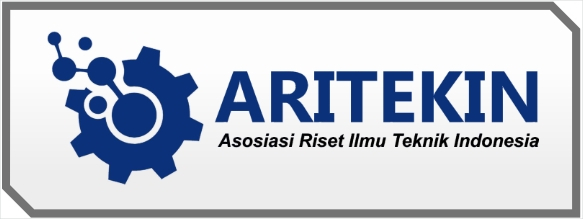Effect of Application Rate on Gold Ore Extraction Process with Column Test Method at PT J Resources Bolaang Mongondow, North Sulawesi
Abstract
PT J Resouces Bolaang Mongondow is engaged in gold processing with the heap leach process using the dynamic cell method. However, currently there will be a change to the static cell method so that it will affect the operational strategy including the application rate. Therefore, in this research, testwork was carried out to determine the best application rate to be used in the static cell process, studying the effect of application rate on leaching kinetics, percent gold extraction value, and cyanide consumption. The research stages include preparation and testing of head assay samples, leaching, and preparation and testing of tailings samples using the column test method. The application rate variations used were 20 L/m2 /h, a combination of 20 & 10 L/m2 /h, and 10 L/m2 /h. Pregnant leach solution obtained per day is checked for pH, free cyanide, and metal content analysis for the calculation of the percent extraction by back calculated. The results showed that the application rate of 20 L/m2 /h and the combination of 20 & 10 L/m2 /h had faster primary leaching kinetics than the application rate of 10 L/m2 /h. Analysis of the percent extraction of application rate 10 L/m2 /h has the highest percent extraction of 89% (0.2081 mg/L gold). Application rate also has an impact on cyanide consumption, where the application rate of 20 L/m2 /h has the highest cyanide consumption of 0.13 g/t. Meanwhile, the application rate combination of 20 & 10 L/m2 /h and 10 L/m2 /h had cyanide consumption of 0.081 g/t and 0.067 g/t, respectively. From the results, it is concluded that the best application rate is the combination of 20 & 10 L/m2 /h, judging from the leaching kinetics factor and the percent extraction obtained. On the other hand, the volume of solution produced is also less so that it can minimize the occurrence of landslides on the leach pad
Keywords
Full Text:
PDFReferences
Arham, L. O., Mufakhir, F. R., & Saputra, H. (2020). Studi Ekstraksi Bijih Emas Asal Pesawaran dengan Metode Pelindian Agitasi dalam Larutan Sianida. Journal of Science and Applicative Technology, 4(2), 103.
https://doi.org/10.35472/jsat.v4i2.365
Asamoah, R. K. (2020). EDTA-enhanced cyanidation of refractory bio-oxidised flotation gold concentrates. Hydrometallurgy, 193(May). https://doi.org/10.1016/j.hydromet.2020.105312
Ghorbani, Y., Franzidis, J. P., & Petersen, J. (2016). Heap leaching technology - Current State, innovations, and future directions: A review. Mineral Processing and Extractive Metallurgy Review, 37(2), 73–119.
https://doi.org/10.1080/08827508.2015.1115990
Kirana, L. S. (2023). Pengaruh Proses Oksidasi pada Ekstraksi Bijih Emas Transisi dengan Media Column Test di PT J Resources Bolaang Mongondow, Sulawesi Utara.
Kusdarini, E., Budianto, A., & Gingga, F. (2018). Recovery of Gold with AgNO3 Pretreatment by Cyanidation at Heap Leaching Cijiwa Gold Ore Processing. Makara Journal of Science, 22(2), 3–8. https://doi.org/10.7454/mss.v22i2.8248
Marsden, J., & House, I. (2006). The Chemistry of Gold Extraction. SME.
http://repositorio.unan.edu.ni/2986/1/5624.pdf%0Ahttp://fiskal.kemenkeu.go.id/ejournal%0Ahttp://dx.doi.org/10.1016/j.cirp.2016.06.001%0Ahttp://dx.doi.org/10.1016/j.powtec.2016.12.055%0Ahttps://doi.org/10.1016/j.ijfatigue.2019.02.006%0Ahttps://doi.org/10.1
Mufakhir, F. R., Sinaga, J. M., Oediyani, S., & Astuti, W. (2019). Pelarutan Emas pada Pelindian Konsentrat Emas Hasil Roasting Menggunakan Reagen Tiosianat. Jurnal Rekayasa Proses, 13(1), 24. https://doi.org/10.22146/jrekpros.41519
Nabella, A., Sulistianto, B., & Karian, T. (2024). Simulasi Pengaruh Ketinggian Genangan Chemical solution Terhadap Kestabilan Heap leach. Jurnal GEOSAPTA, 10(1), 9. https://doi.org/10.20527/jg.v10i1.14366
Nursiah, Haryati, T., & Andarini., N. (2019). Isolasi Emas dari Larutan Kompleks Emas Thiourea Hasil Ekstraksi dengan Metode Elektrolisis. Berkala Sainstek, 7(1), 28–32.
PT J Resources Bolaang Mongondow. (2024). Data PT J Resources Bolaang Mongondow.
Rapele, N. P., Fajar, N. A., Febriana, F., & Ridzuan, M. (2022). Ekstraksi Emas Dan Perak Menggunakan Tiourea. Jurnal GEOSAPTA, 8(1), 39.
https://doi.org/10.20527/jg.v8i1.11593
Riastuti, R., Muwahhid, K., Maksum, A., Soedarsono, J. W., & Asfar, M. I. Y. (2022). Effect of Thiosulfate Concentration and Leaching Temperature in Ammoniacal Thiosulfate Leaching of Refractory Sulfide Gold Ore. Jurnal METTEK, 8(2), 146. https://doi.org/10.24843/mettek.2022.v08.i02.p09
Sarempa, A., & Isjudarto. (2014). Optimasi Recovery Emas dan Perak dengan Sianidasi pada Deposit Bijih Emas Kadar Rendah Di PT Nusa Halmahera Minerals Daerah Gosowong. Teknik Pertambangan - Sekolah Tinggi Teknologi Nasional Yogyakarta, 1–8.
Suci, S. L., Karian, T., Prassetyo, S. H., & Sulistianto, B. (2022). Heap leach stability analysis using PFC2D. International Symposium on Earth Science and Technology, January, 205–208.
Tanriverdi, M., Mordoǧan, H., & Ipekoǧlu, Ü. (2005). Leaching of OvacIk gold ore withcyanide, thiourea and thiosulphate. Minerals Engineering, 18(3), 363–365.
https://doi.org/10.1016/j.mineng.2004.06.012
Wahyuningsih, T., & Pamungkas, W. (2022). Proses Acid Wash Untuk Menurunkan Kadar Pengotor Pada Cake Hasil Merril Crowe. Journal of Metallurgical Engineering and Processing Technology, 2(2), 28.
https://doi.org/10.31315/jmept.v2i2.6524
Watling, H. R. (2006). The bioleaching of sulphide minerals with emphasis on copper sulphides — A review, Hydrometallurgy.
https://doi.org/https://doi.org/10.1016/j.hydromet.2006.05.001.
Widara, M. R., & Rauf, A. (2017). Perbandingan Hasil Logam Emas Pada Pengolahan Bijih Emas Dengan Metode Sianida ( Heap Leaching ) Berdasarkan Perbedaan Ukuran Butir Umpan. Prosiding Seminar Nasional XII “Rekayasa Teknologi Industri Dan Informasi,” 30–35.
Yannopoulos, J. c. (1991). The Extractive Metallurgy of Gold Extractive of Gold.
Yustanti, E., Guntara, A., & Wahyudi, T. (2018). Ekstraksi Bijih Emas Sulfida Tatelu Minahasa Utara Menggunakan Reagen Ramah Lingkungan Tiosulfat. Teknika: Jurnal Sains Dan Teknologi, 14(2), 97. https://doi.org/10.36055/tjst.v14i2.586
DOI: https://doi.org/10.31315/jmept.v5i1.12385
Refbacks
- There are currently no refbacks.
Copyright (c) 2024 Frederico Espinoza Rangan
Journal of Metallurgical Engineering and Processing Technology indexed by:

Journal of Metallurgical Engineering and Processing Technology (JMEPT)
Department of Metallurgical Engineering, UPN "Veteran" Yogyakarta
Metallurgical Research and Development Centre (MRDC)-UPNVY
Gd. Urip Sumohardjo Lt. 2
Jl. Babarsari No. 2, Tambakbayan, Yogyakarta 55281
View My Stats










1.png)
1.png)